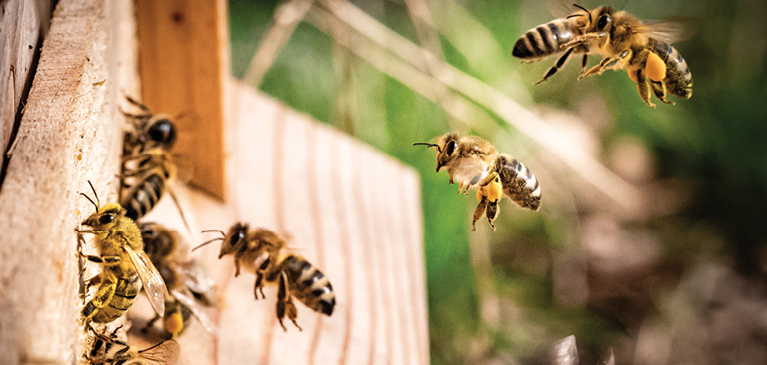
When I was nine years old my retired neighbor gave me a tour of his honeybee operation. Tucked away in the cedar swamps of the Les Cheneaux Islands were 45 hives. I've been hooked on beekeeping since that day, and I did every odd job I could find to earn enough money to buy my first two hives.
I spent a good portion of the following winter building Langstroth hives in my neighbor’s barn and the following summer I was mentored in the art of keeping honeybees. It was a lot easier back then; we were winning the battle against tracheal mites, and hives across the nation were rebounding. No one had ever heard of the Small Hive Beetle, Colony Collapse Disorder (CCD) or Varroa.
I have always marveled at the influence weather has on honey production. One year I would be lucky to get 50 pounds of honey from a hive, while other years a hive might produce over 200 pounds! Given the opportunity, a healthy hive will put on as much honey as possible but there are limiting factors: overall seasonal temperatures, rainfall, water availability, and location.
Beekeeping Resource Risk Management
How can an apiculture-based business manage its natural risks to production? A good beekeeper watches the weather and responds, providing optimal locations, water, and supplemental feed during a dearth. These actions cost time and money.
The USDA realized that producers can’t always fight mother nature and created a couple of resources for beekeepers to help manage increased costs and risk to their revenue. After experimenting with traditional crop insurance ideas, the USDA-Risk Management Agency (RMA) office released a unique insurance policy for apiculture. In 2017 a final product became available.
Beekeepers are now able to insure against poor rainfall in a designated area around their hives. The producer selects two-month intervals (you must select at least two intervals that don’t overlap) within the year and is guaranteed that at least 70% to 90% (based on the producer’s policy elections) of the average rain will fall in the designated area. Rainfall has a direct relationship on available pollen and nectar supplies; inadequate rain could result in your hives having less production or may require additional inputs to retain colony health.
I like several things about apiculture insurance:
1) You can look back over 20 years and see how well each location and time interval performed. While the past doesn’t necessarily predict the future or guarantee future claim payments, it does give an excellent viability test and helps verify perceived risk.
For example, in my designated area my gut said I need coverage in the August-September interval. This is production time! Goldenrod, purple loosestrife, and birdsfoot trefoil are all in great supply during these two months. My hives could easily do 100 pounds a hive in an optimal year. I was right! Upon checking the historical data, I discovered that 11 out of 20 years had a rainfall that would have triggered a claim payment equaling an estimated 180% of the premium I would have theoretically paid into the program.
2) This policy doesn’t require production record paperwork. Most crop insurance policies require a producer to retain copious amounts of harvest records and production data that all need to be verifiable through a third party. This policy only requires that your hives be in the designated area during the selected interval, that you own or rent the land the hives reside on, and that you can somehow verify that you own the hives (usually receipts for woodenware, bee packages, or a nucleus hive are enough).
3) You choose what to insure. You make the decision on how many hives you insure based on your own risk needs. You can only insure up to a maximum of all the hives you have in the nation, so migratory keepers aren’t excluded from this policy.
4) Everyone is included. Obviously, there are some program requirements to participate but the policy doesn’t limit anyone from participating based on size. Everyone from small hobby businesses, sideliners, and large commercial operations can participate. You should discuss the program requirements with a qualified crop insurance agent.
As beekeepers we can only control our best practices. We can be prepared to respond quickly and to follow all the best farming practices and Integrated Pest Management (IPM) that the experts can create, but we can’t make it rain...so, I’m glad we can insure one of the risks we can’t control.
The deadline to sign up for coverage for the 2021 calendar year is November 15, 2020. I encourage you to make an appointment with a qualified crop insurance agent familiar with the apiculture policy to determine if it’s right for your operation.
To view the article in the online 2020 Fall Partners Magazine, click here.


